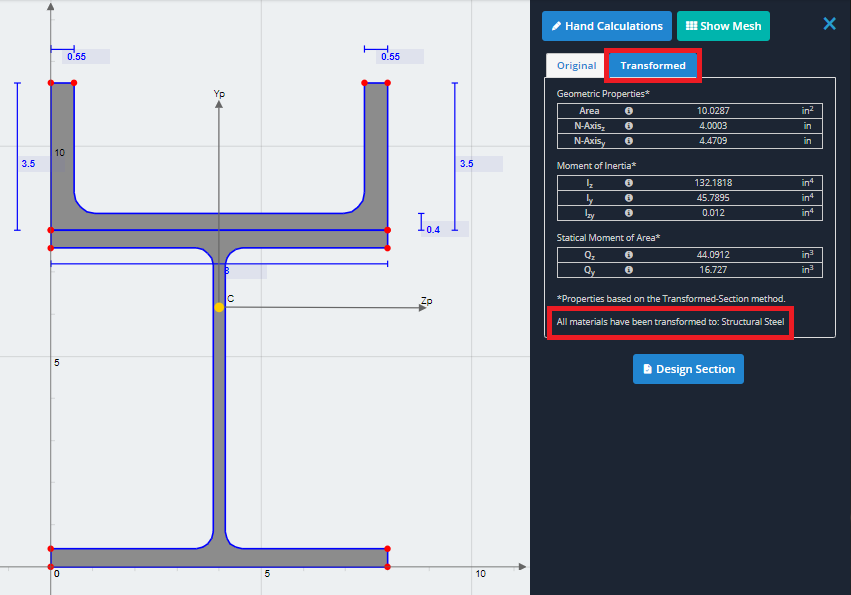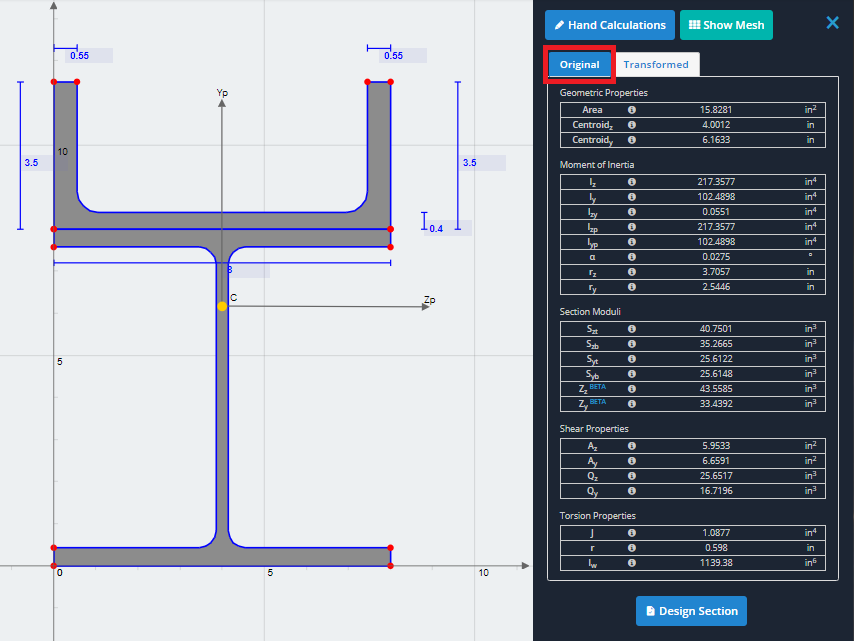Een belangrijk concept om te begrijpen is dat de sectie-eigenschappen allemaal geometrisch zijn. Dat wil zeggen: om ze te berekenen, u hoeft geen rekening te houden met materiaaleigenschappen en bent daar dus onafhankelijk van.
Een belangrijk verschil dat door de introductie van verschillende materialen wordt veroorzaakt, is echter de beweging van de neutrale as ten opzichte van het zwaartepunt. Terwijl het zwaartepunt puur geometrisch is, de neutrale as niet. Wanneer een sectie van een uniform materiaal is, de neutrale as loopt door het zwaartepunt. Bij een sectie bestaande uit verschillende materialen is dit niet het geval. Vanwege dit belangrijke verschil, het traagheidsmoment waarden (voor buigen) en statisch moment van gebiedswaarden (voor afschuiving) moeten worden aangepast om respectievelijk door de buig- en schuifformules te kunnen worden gebruikt.
Het secundaire doel van de Section Builder is om resultaten in SkyCiv Beam en SkyCiv S3D in te voeren, zodat resultaten voor doorbuiging en spanning kunnen worden bepaald. Met composiet secties, de getransformeerde traagheidsmomentwaarden en statische momentoppervlakwaarden worden verzonden. Torsiewaarden worden echter niet aangepast, en de originele/standaard torsiewaarden worden verzonden. Als gevolg, Opgemerkt moet worden dat torsieresultaten voor staven met samengestelde secties mogelijk niet nauwkeurig zijn.
Voorbeeld: Vergelijk standaard- en samengestelde resultaten
De resultaten hier gaan verder van de sectie die is gebouwd in de sectie Samengestelde secties. Als opfrisser, het kanaal is gemaakt van beton, en de I-balk is gemaakt van constructiestaal. Na ‘Bereken’ er is geklikt, de resultaten worden aan de rechterkant weergegeven. Merk op dat er twee tabbladen zijn voor resultaten; ‘Origineel’ en ‘Getransformeerd’.
De resultaten binnen de ‘Transformed’ tabblad geeft u de samengestelde resultaten. Merk op dat het kanaal, die van beton was, is getransformeerd in constructiestaal omdat constructiestaal een hogere Young-modulus heeft.
Door op ‘Origineel’ tabblad geeft u de standaardresultaten die materiële verschillen negeren. Hierbij wordt ervan uitgegaan dat de neutrale as het zwaartepunt snijdt. Als je de resultaten vergelijkt, u zult merken dat de locatie van de neutrale as verschilt van het zwaartepunt. Voor de getransformeerde sectie worden geen eigenschappen voor torsie berekend.



